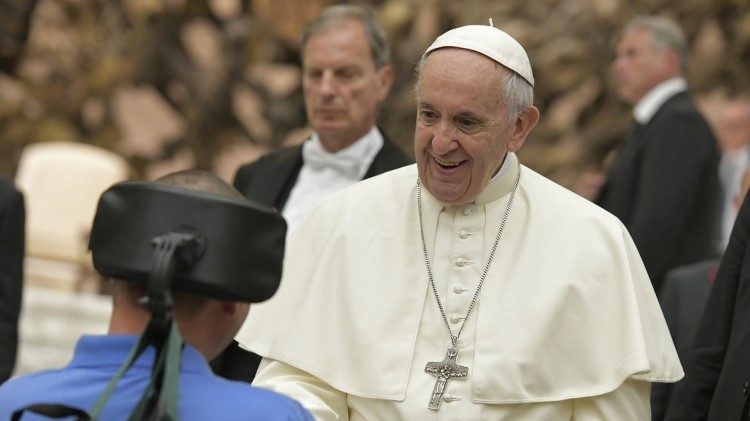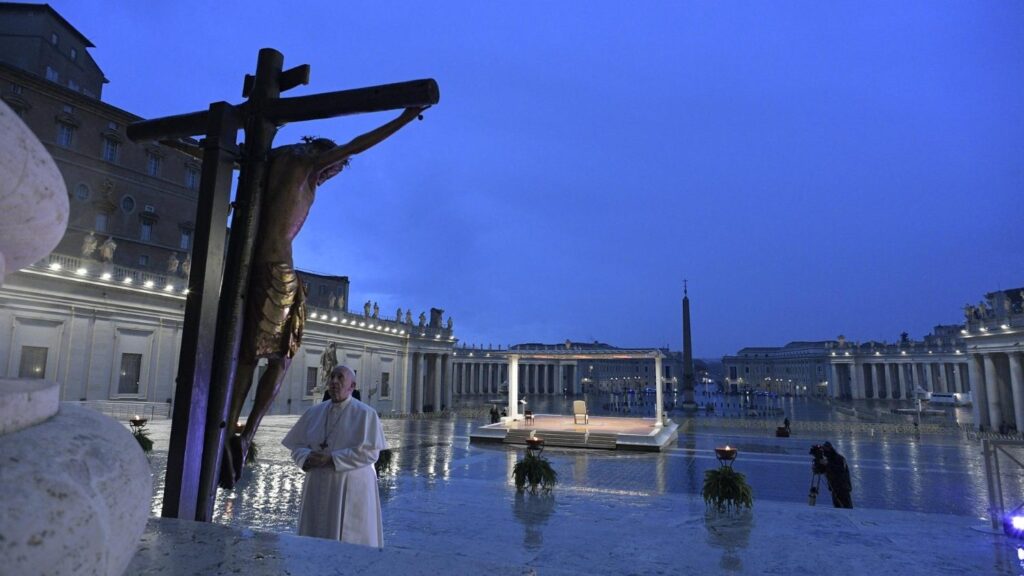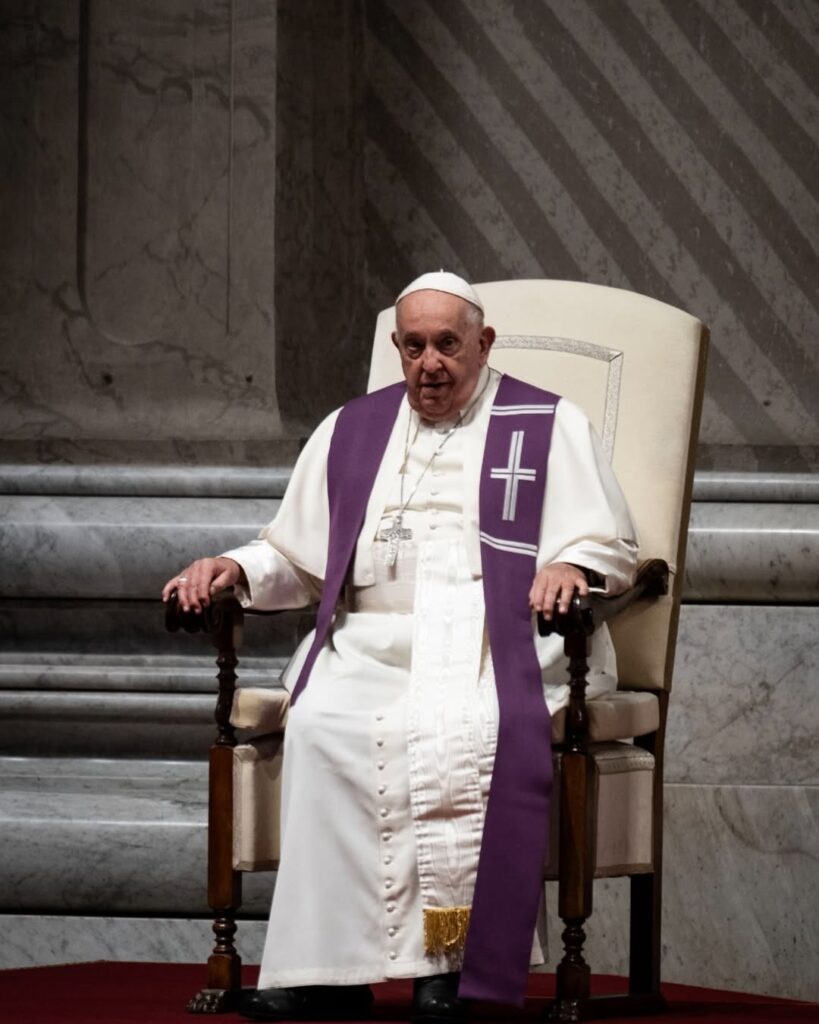Deconstruction
Instead, let us regain the initiative and offer a narrative based on truth

It is commonly said that history is written by the victors. However, this is no longer the case. The woke culture has taught us to rewrite history, to re-signify culture, facts, the whole of reality, seeing it through a new prism, which gives a new relevance to Campoamor’s words: “Nothing is truth, nothing is a lie, everything is the colour of the glass you look through”.
In the case of recent Catholicism, we are seeing how its history has been rewritten and its role in culture, society and the world redefined. There are three paradigmatic examples of this process of “deconstruction”, that is, undoing a reality in its simplest elements in order to reconstruct it differently. The result is that, with true elements, you deconstruct a reality, in order to construct a new, different one, which is no longer true. In this way, you replace an original and truthful narrative with a divergent and fallacious one, which takes the place of the first. This would be the deconstruction of the role played in the Church and the world by the Venerable Pius XII, St. Teresa of Calcutta and St. John Paul II, in chronological order.
First, Pius XII. At the end of the war, he repeatedly received recognition from the Jewish people for his quiet work that directly saved thousands of Jews in Rome, and his diplomatic efforts to achieve peace and save Jews from the Nazi holocaust. Thus, immediately after the end of the war, on 21 September 1945, Leo Kubowitzki, Secretary General of the World Jewish Congress, expressed his “heartfelt thanks for the action taken by the Catholic Church on behalf of the Jewish people throughout Europe during the war”. This was how the Pope’s work – backed up by concrete deeds – was perceived at the end of the war. A few years later, when Pius XII died in 1958 and the State of Israel had emerged, with more historical perspective, Golda Meir, then Foreign Minister and later Prime Minister of Israel, considered Pius XII “a great friend of Israel”. Not content with that, she stressed: “We share the pain of humanity… when terrible martyrdom befell our people, the Pope’s voice was raised on behalf of the victims”. This was the perception of the Jewish authorities, when the dreadful events of the Holocaust were still fresh in their memories. The most eloquent testimony to the Pope’s work on behalf of the Jews, however, is that of the Chief Rabbi of Rome, Israel Anton Zoller, who had served in that capacity between 1939 and 1945 – the war years – and at the end of the war converted to Catholicism, taking the Christian name Eugenio, in honour of Eugenio Pacelli (Pius XII), for the efforts he had made to save Jews in Rome.
The process of “deconstructing” the figure of the Venerable Pius XII began in 1963 on the occasion of the play “The Vicar” by Rolf Hochhut, in which he presents the Pope as fearful and attached to his status and privileges, so that out of fear he decides to keep silent about everything he knew about the Jewish Holocaust. In 2007 it was made public that “The Vicar” was commissioned by the Soviet KGB, on the instructions of Nikita Khrushchev, as it sought to undermine the moral authority of the Holy See. However, 16 years after this news was made public, it has not been possible to rehabilitate the figure of Pius XII, to the extent that he has not been beatified, in order to avoid friction with the Jewish people. The public image of the Pope based on a lie has prevailed.
Act II: St. Teresa of Calcutta. When Saint Teresa of Calcutta died in 1997, she represented the incarnate image of charity. The calling card of Catholicism, showing how her congregation – the Missionaries of Charity – did for charity, for the poorest of the poor, what no one else in the world was doing. She received the Nobel Peace Prize in 1979 and in 1980 India’s Bharat Ratna Award, India’s highest civilian award. However, the process of “deconstructing” her image had already begun. It was too attractive, too good, it made the Church look too good, its history had to be rewritten. In 1994 the belligerent atheist journalist Christopher Hitchens made the documentary “Hell’s Angel” about Mother Teresa. It is a masterpiece of how one can look at reality from a different perspective, using the “hermeneutics of suspicion” to change the public perception of the saint.
First Hitchens, and later other atheist journalists and Hindu nationalist institutions, rewrote the saint’s story. Thus, she appeared as someone who loved microphones and cameras, who instrumentalised the poor to rub shoulders with the powerful. She was a friend of dictators such as Fidel Castro, Jean-Claude Duvalier and Augusto Pinochet, with whom she met to open houses of the Missionaries of Charity in their respective countries. She was accused of lacking clarity in her financial dealings, of handling enormous sums of money for her charitable works without ever having been audited, of taking advantage of the helplessness of the dying she cared for to pressure them to convert to Catholicism, and of the fact that her nuns were not sufficiently trained to care for the sick, nor did her hospitals have basic equipment. The saint would love to be photographed with Lady Diana and, finally, the nuns of charity would not care for her in their ill-equipped hospitals at the end of her life, but in private hospitals. Particularly insidious was their criticism of the saint’s “theology of pain”, for whom suffering was a way of uniting with Christ, and the suffering of the sick would be pleasing to God. As a result of this denigrating campaign, in the eyes of many intellectuals and quite a few young people, St. Teresa of Calcutta no longer represents the ultimate model of charity and concern for the poor.
Finally, St. John Paul II. When this Supreme Pontiff died in 2005, there was an unusual and spectacular pilgrimage from all over the world to watch over his mortal remains, especially by young people, who queued for up to 10 or 12 hours to spend just a few moments next to the body of the deceased Pope. So much so that Benedict XVI, at the beginning of his pontificate, could only exclaim, in the face of such a spectacle, that “the Church is alive and young”. No one in history has ever gathered more heads of state at his funeral than he did. John Paul II was also the man who achieved the largest gathering of people in history when he brought together more than 5 million people in Manila, Philippines, in 1995. He was the person who has been seen directly by the most people in world history. He was instrumental in the fall of the Berlin Wall and communism in Eastern Europe, which restored freedom to millions of people. He was the Pope who pushed for the truth to be established about the “Galileo” case and who asked God’s forgiveness in 2000 for the crimes perpetrated in His name throughout history, particularly the Inquisition and the Crusades. Someone who tirelessly interceded for peace in the world… All this led Pope Emeritus Benedict XVI to write a letter on the occasion of the centenary of Karol Wojtyla’s birth, tentatively suggesting that he might be included in the list of Popes who bear the epithet “Great”, i.e. only two in the history of the Church: St. Leo the Great and St. Gregory the Great.
However, none of that counts any more. St. John Paul II is accused of having not only tolerated, but promoted and made an example of clerics guilty of paedophilia or sexual abuse. Such would be the case of Marcial Maciel, founder of the Legionaries of Christ, and Cardinal Theodore McCarrick, Archbishop of Washington, promoted to that see by Pope Wojtyla. In both cases, he had already been warned. Indeed, the long-standing allegations against Maciel were renewed in the mid-1990s, but were not given much attention. Also, important church authorities warned him that McCarrick had a bad reputation in the United States, but McCarrick wrote directly to the pope, defending himself, arguing that it was only ecclesiastical slander by the envious. He finally believed him and put him in charge of the archdiocese of Washington.
Valentina Alazraki has suggested that St. John Paul II was accustomed, from his long time in the diocese of Krakow under a communist government, to hearing thousands of false slanders against priests in order to discredit the Church. He thought the same in the case of Maciel. It could only be slander, for, as the Gospel says, “there is no good tree that produces bad fruit” (Matthew 7:18), and the fruits of the institution founded by Maciel were more than eloquent. At the same time, Fr. Maciel had important defenders within the Roman Curia, particularly Cardinal Angelo Sodano, second in command in the government of the Church. The allegations, renewed against Maciel at the end of his pontificate, would catch him very tired and he would yield to the vision offered by his most direct collaborator, Cardinal Sodano, defender of the Legionaries.
When we judge with historical perspective and having all the elements of judgement, we can commit injustices against the direct protagonists of the events. We have information that they did not have. However, in these three cases, it is essential that historical truth prevails, i.e. that we do not give way to narratives based on the “hermeneutics of suspicion”. On the contrary, let us regain the initiative and offer a narrative based on truth, which takes into account the limitations and the elements of judgement that the protagonists of the events had at the time.
Related

Francis. The Human and Religious Imprint of a Papacy
Isabel Orellana
24 April, 2025
5 min

Cardinal Felipe Arizmendi: With the Risen Christ, There Is Hope
Felipe Arizmendi
24 April, 2025
6 min

You Didn’t Give Up
Exaudi Staff
23 April, 2025
2 min

Sing, pray, give thanks
Mar Dorrio
23 April, 2025
2 min
 (EN)
(EN)
 (ES)
(ES)
 (IT)
(IT)

